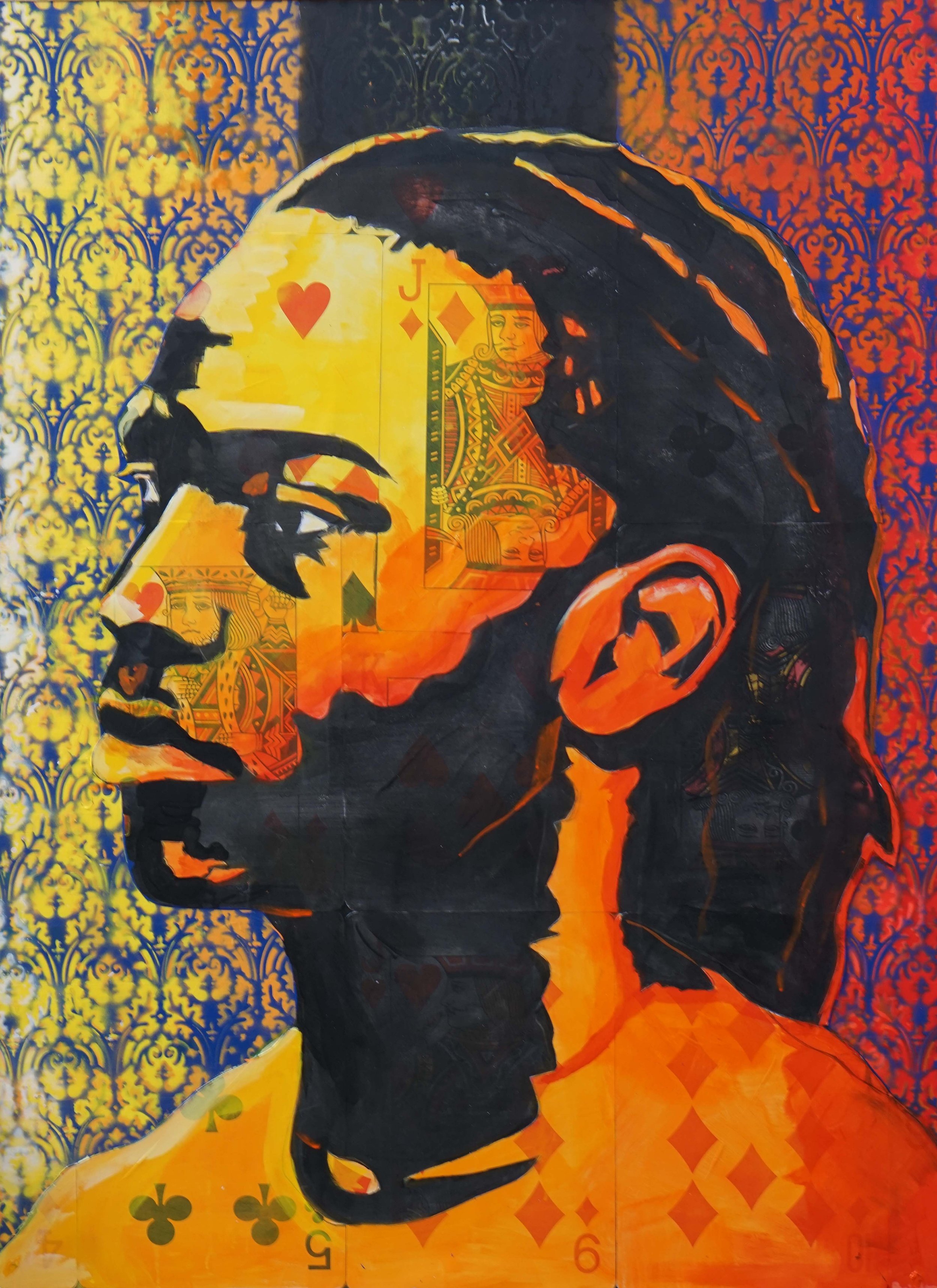Interview with artist Rashawn Penister
Rashawn Penister is a native of Pine Bluff, Arkansas. In 2013 he graduated from the University of Arkansas at Pine Bluff with a BS in visual art and is now working toward an MFA at the University of Memphis. Rashawn uses playing cards in his artwork to represent the choices people must make when confronting their struggles in society. His paintings have been selected for many prestigious exhibitions including the Annual Delta Exhibition and the Arkansas Art Council’s Small Works on Paper. More of Rashawn’s work can be found at his website rashawnpenister.com.
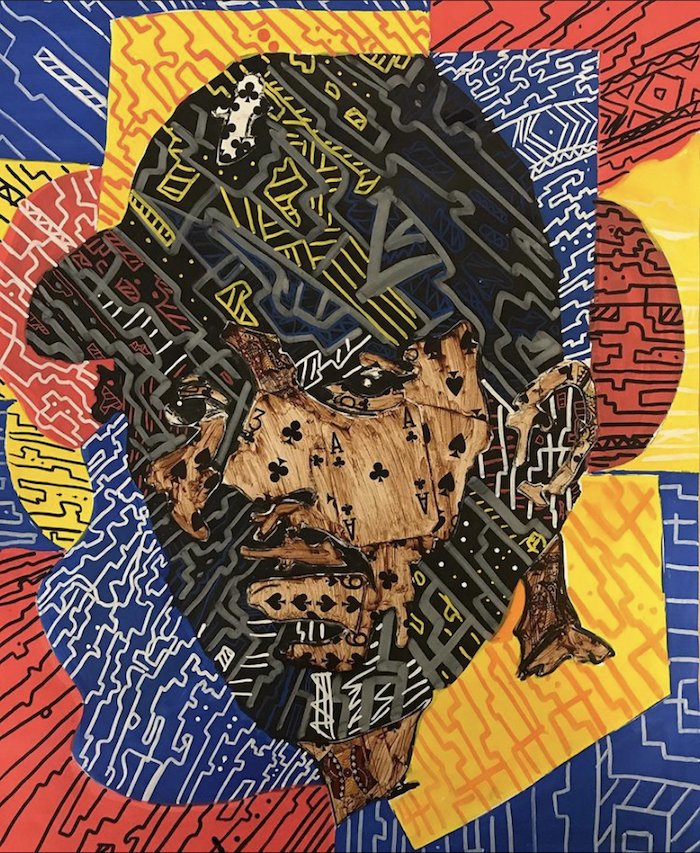


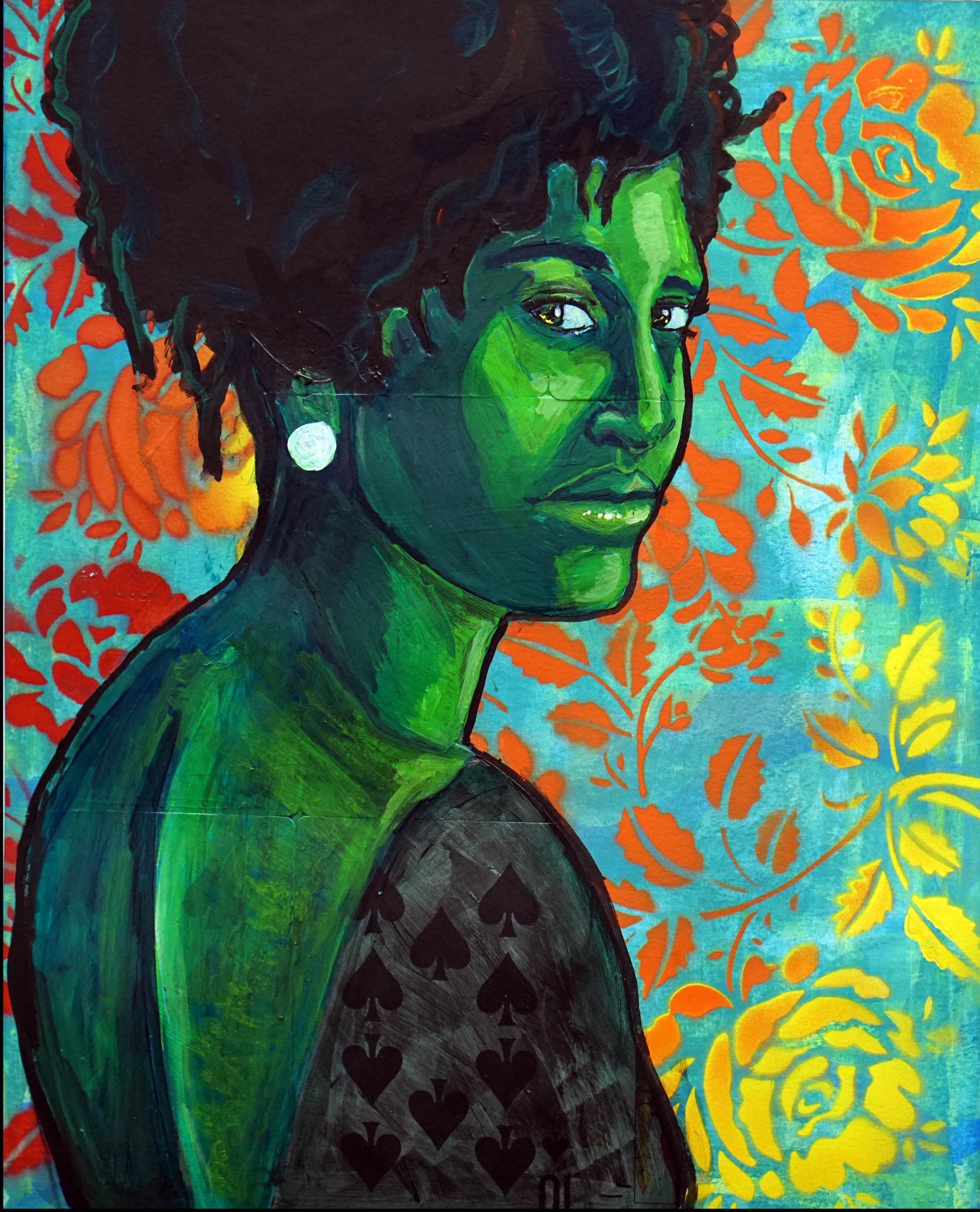
AAS: Rashawn, where did you grow up?
RP: I grew up in Pine Bluff, Arkansas. I am the second of three boys. Even with working full time jobs, my parents were heavily involved in our lives. I got my skills from watching them both work on things during their leisure time. My dad like to fish and build things around the house. My mom like to sew, cook, and decorate around the house. I graduated from Watson Chapel High School in 2005 and then attended the University of Arkansas at Pine Bluff. I graduated in 2013 with a degree in Visual Art. I returned to UAPB to study for my teacher licensure and then I taught elementary art for the Pine Bluff school district for a couple of years. Now, I am working on getting my MFA at the University of Memphis.
AAS: So, you are working on your MFA now? Why do want to obtain an MFA?
RP: Yes, I am working toward an MFA in Visual Art with a concentration in painting. I want to obtain an MFA not only to be an art educator, but to learn more about the opportunities in the art world. During my time here in Memphis, I have been able to meet many artists, both local and out of state. It has been a great experience.
AAS: Looking back, when do you think you first became interested in art and in being an artist?
RP: I’ve been interested in art since my mom gave me a comic book when I was five years old. After that, I would hang out in the comic book section while my mom shopped at local grocery stores. I was heavily influenced by comic books, anime, cartoons, and video games and I would draw on the back of my assignments while I was in elementary school. I didn’t have any formal art classes until I reached middle school, where I met Mrs. Hilgeford and Mr. Bell. Later, while in college, I met Professor Henri Linton at the University of Arkansas at Pine Bluff. They really opened my eyes and showed me what it takes to be an artist. My parents knew that art was for me since I was a kid. They always encourage me to draw other things besides comic books characters and get a bachelor's degree in Visual Art.
AAS: You incorporate playing cards into your paintings. How did that happen?
RP: We often had family gatherings at my grandmother’s home and my family would play card games all day. I decided to incorporate cards into my artwork years ago, inspired by the nostalgic memories of our epic family gatherings. Also, I had a conversation with a coworker who once stated, “We must play the cards that we’re dealt.” meaning we should make the most of what is afforded or available to us. This really gave me the spark to keep working with the playing cards. The concept of my work is focused on creating a visual message with playing cards, an object that is used for entertainment. But, we are all metaphorically playing a card game as we make life choices.
AAS: Let’s talk first about your Self-Portrait. Is there a significance to the cards you used in the image?
Untitled 5, Self-Portrait, 36’ x 18”, playing cards and acrylic on paper
RP: I mainly used the spade and club cards in my self-portrait. In spades, the spade is the strongest deck of cards in the game. I used the club since the clover represents luck. I also used the king card which is a face card to represent men. In games like poker, blackjack and Mississippi mudslide, the king is a card that helps you win. I went with a monochromatic background so the pattern can be partially hidden, and viewers can concentrate on the figure. The painting is a statement of the choices I made, which brought me to where I am today.
AAS: Patience is an extraordinary piece – very powerful – and it was selected for the 61st Annual Delta Exhibition. Tell me about that piece and what it is like to have a work selected for the Delta.
Patience, 46” x 36”, playing cards and acrylic on canvas
RP: Patience was a piece that I worked on for a while. I took reference pictures of my classmates and came across a picture that stood out from the rest. At first, I left the painting black and white before adding a warm color scheme to it. Then, I decided to add different kinds of lines in the background to represent the roads life can take us. I was overjoyed when Patience was selected for the Delta. To get your work in the Delta is a huge deal for artists in Arkansas. You get to meet the other artists who were selected for the exhibition along with curators and gallery owners. Meeting Kevin Cole, a famous artist from Pine Bluff, and listening to him explain my artwork to the viewers was an amazing experience.

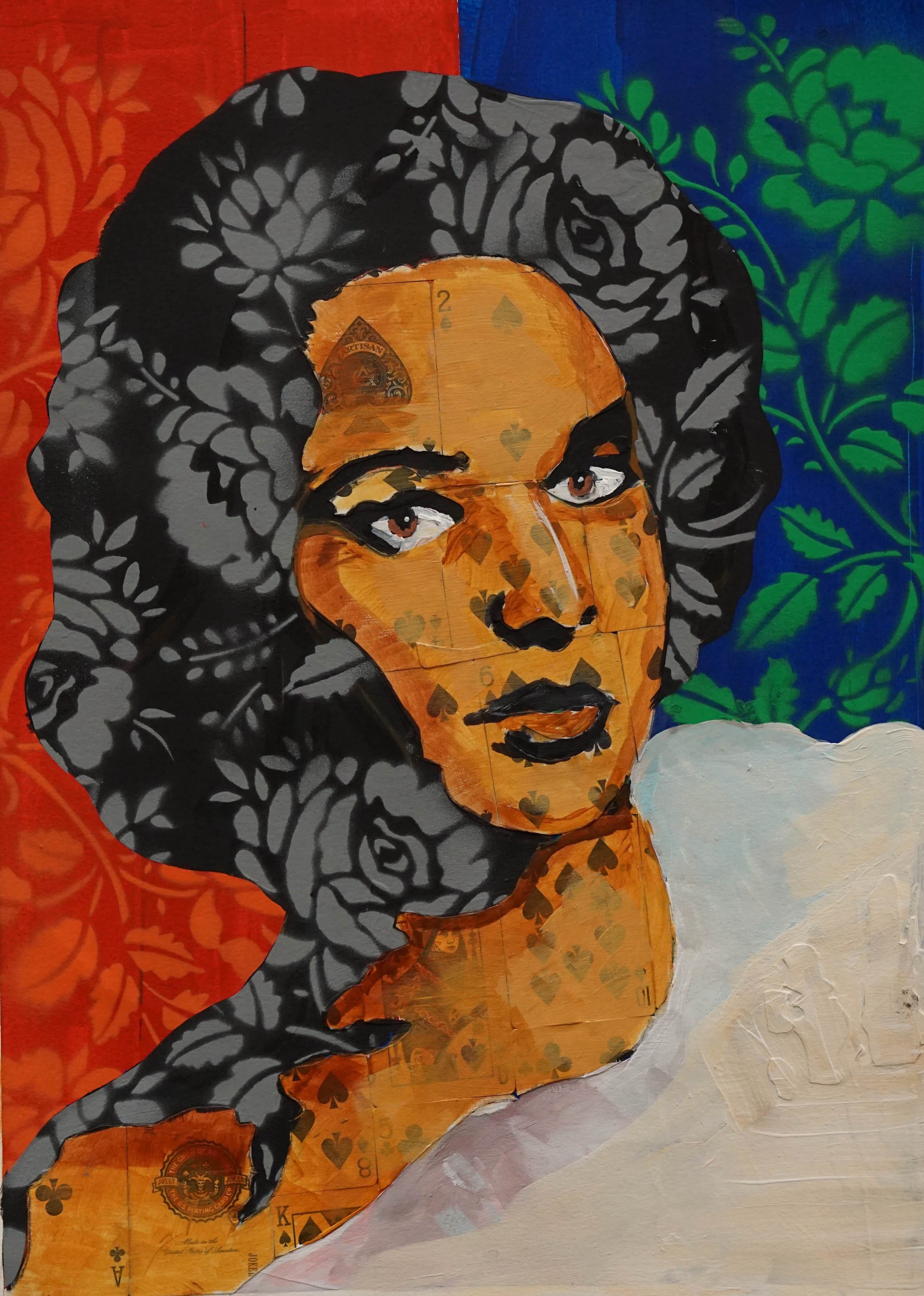
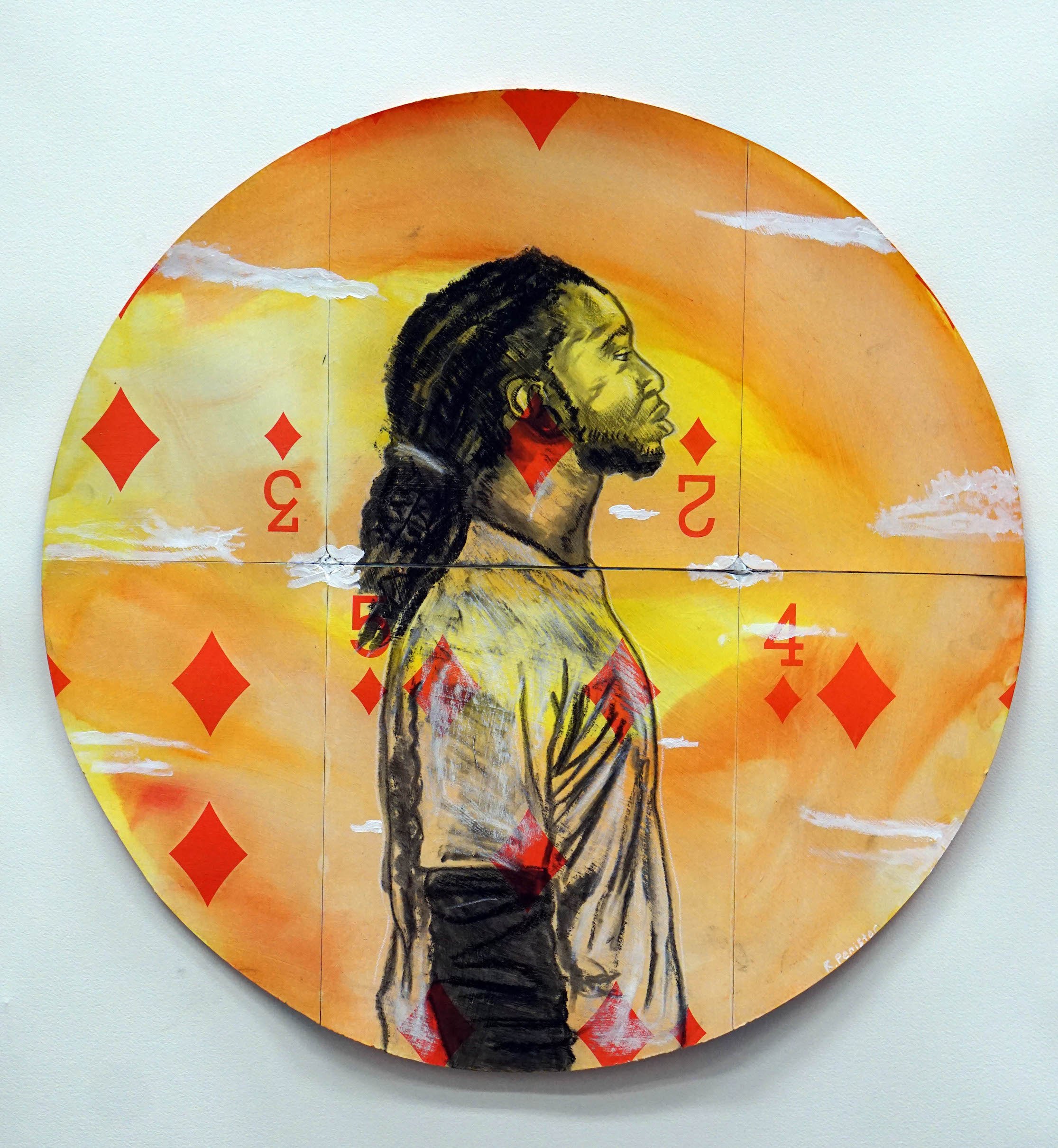
AAS: Another powerful piece is Looking Forward. In this piece you used the Greek key pattern for the background What is the story behind that piece?
Looking Forward, 22” x 16”, playing cards charcoal and acrylic on paper
RP: Looking Forward was an experimental piece that I created out of curiosity. I used charcoal instead of acrylics on the card to see if the medium would work. The Greek key symbolizes unity and I used clouds in the painting to represent stability and positivity. The clouds give the painting an illusion of depth and space. Obafemi, the person in the picture, is heavily involved in the community back home. So, I think everything in this painting represents him well.
AAS: You have an untitled work in the 2022 Small Works on Paper traveling exhibition. In that piece the cards are almost completely hidden. Tell me about that piece and what it is like to be a part of that exhibition.
Untitled, 22” x 16”, playing cards and acrylic on paper
RP: I created Untitled when I was still experimenting with the glazing technique for the playing cards to be seen. I was working on creating transparent layers but most of the cards were covered by the paint. I used the black and white background so viewers can direct their eyes to the person in the painting. I used the floral background for this piece to symbolize life. I decided to enter the painting in the 2022 Small Works on Paper and was amazed that it was accepted. Being a part of the 2022 Small Works on Paper was another goal I accomplished as an artist. I’m grateful more people in Arkansas will have a chance to see my work. My supporters and the art community will get another chance to see my work at the 2023 Small Works on Paper as well since Looking Forward was accepted into that upcoming exhibition.
AAS: How do you define your style and what artists to you most admire?
RP: My style is a combination of Impressionism, Expressionism and Pop art. I admire artists like Kehinde Wiley, Charles White, Barkley L. Hendricks, and Mickalene Thomas. I saw Wiley, Hendricks, and Thomas’ paintings in the 30 Americans exhibition while it was at the Arkansas Museum of Fine Arts, formerly known as the Arkansas Arts Center. I was amazed by these huge paintings and the techniques they used to create them. I hope one day that my artwork can be showcased beside one of them.
AAS: Rashawn, where do you see yourself and your art practice in the next 5-10 years?
RP: After I complete my MFA, I plan to pursue a career as an art educator and continue creating art. I am also hoping to secure an art residency down the road. I’ll continue to use the playing cards in my artwork, but I plan to start creating larger scale paintings. I would also like to try new mediums and explore other subjects like landscapes. It has been an enjoyable journey and I am grateful for the support of my family, friends, professors, and other artists as I pursue my artistic dreams. Also, thank you, Philip, for reaching out for this interview.


